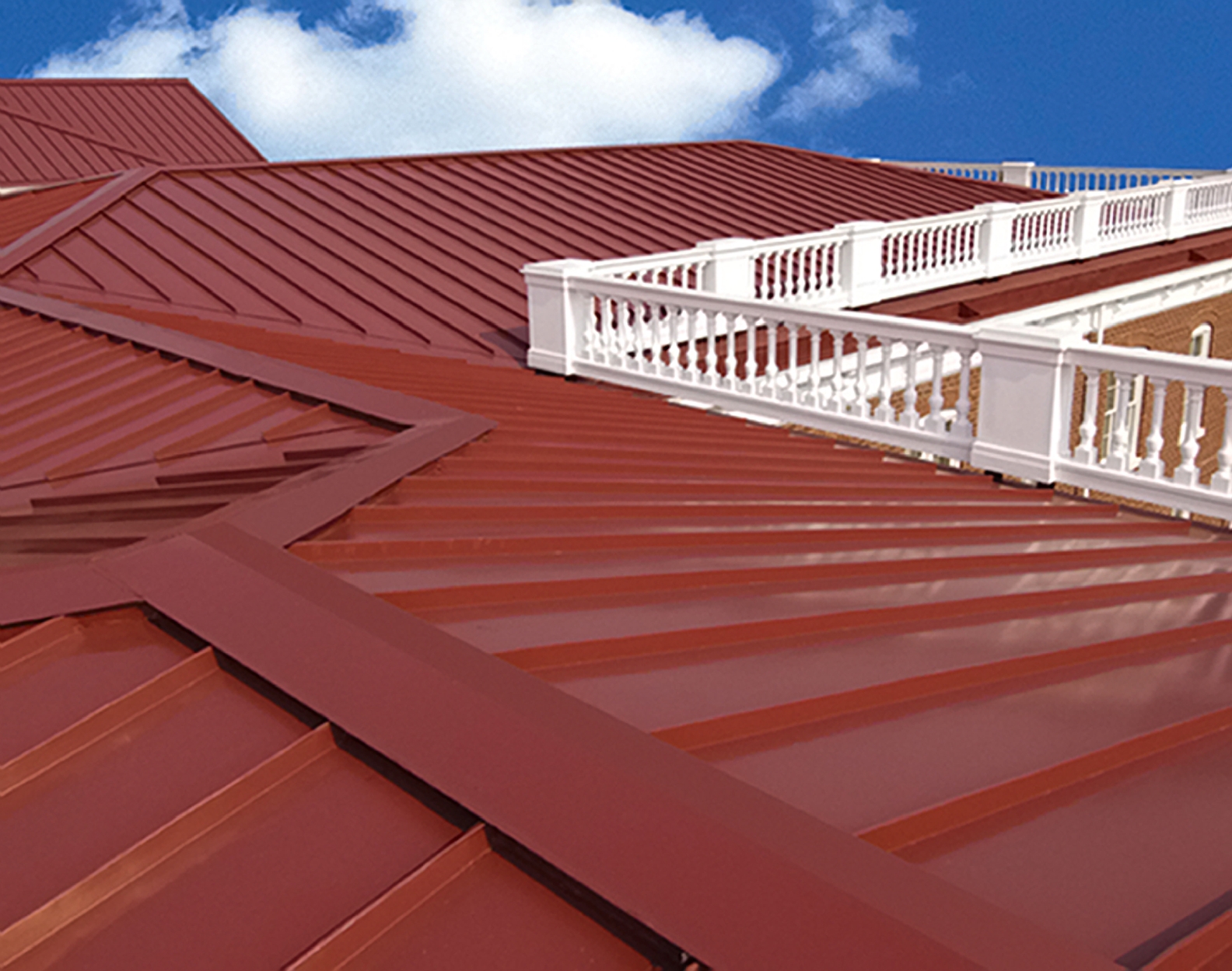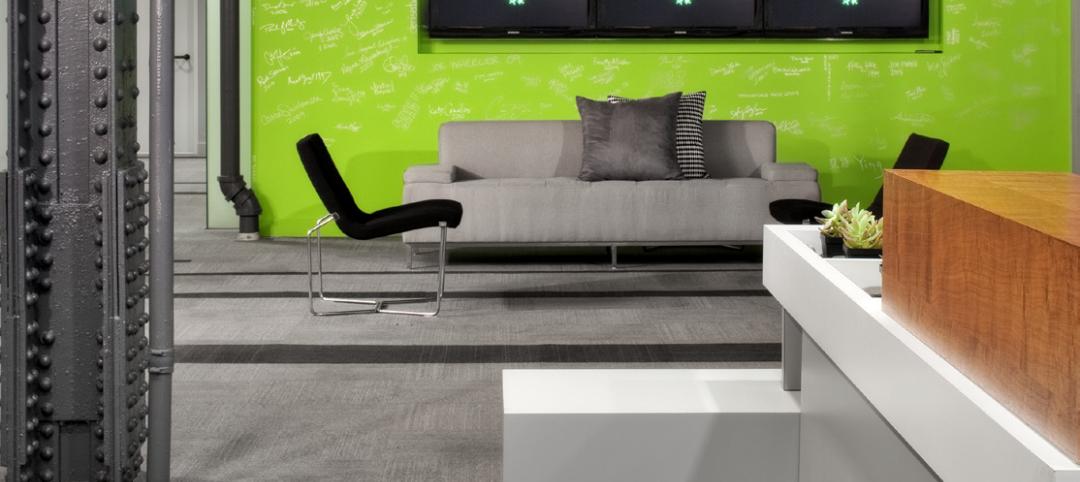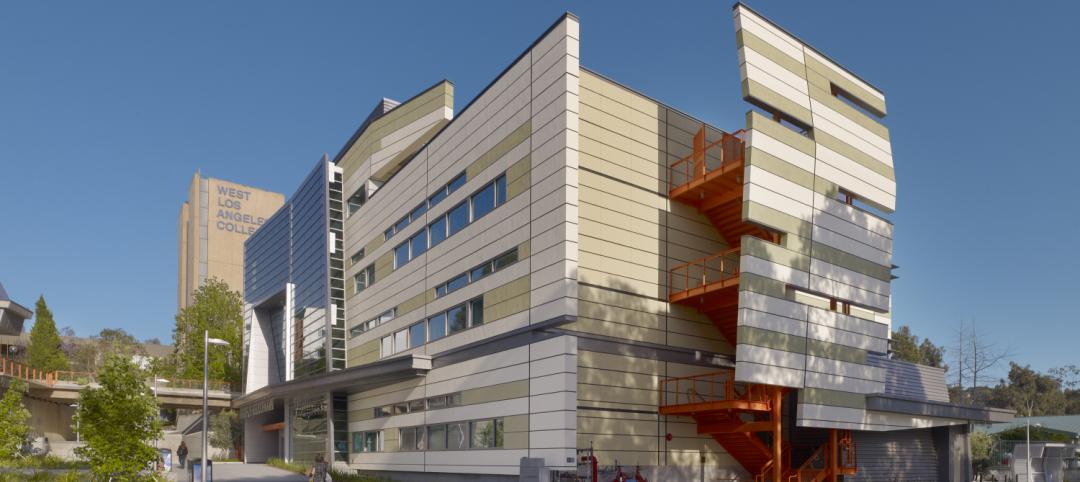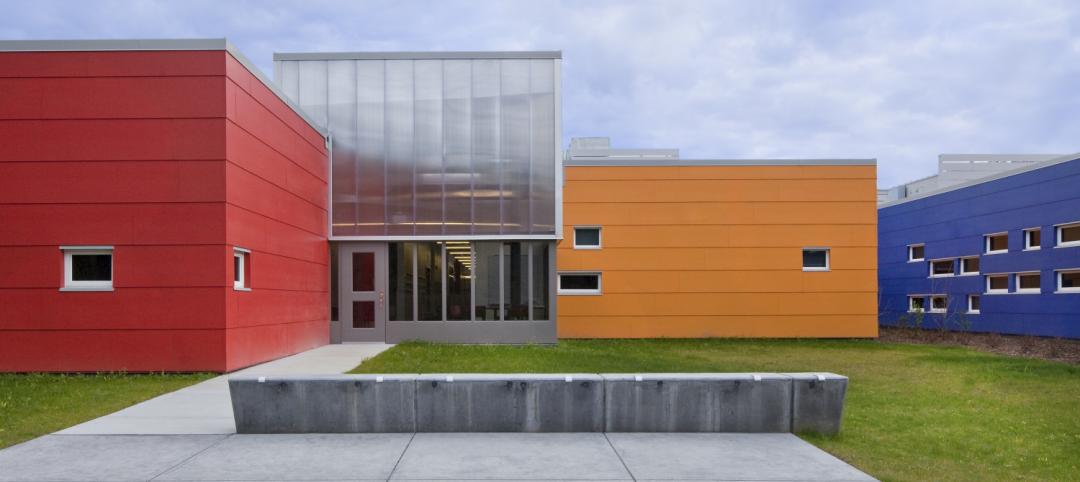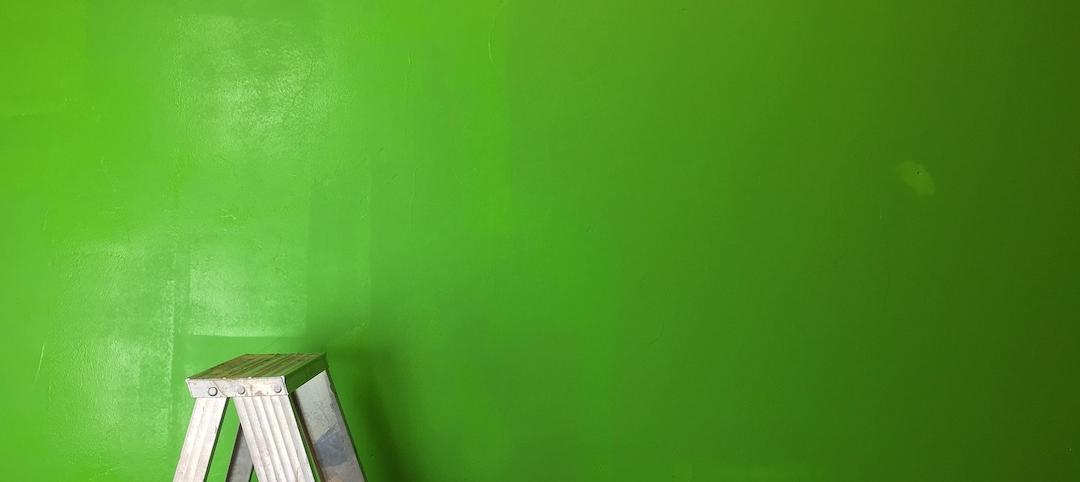The power of color extends beyond the psychological, such as with its ability to elicit emotions or communicate a company’s message through branding. Colors can also help reduce the energy a building needs for HVAC, lighting, and more. In other words, colors are a helpful tool for meeting energy performance goals.
“I once saw a solar home that had a southern-facing wall that was painted black,” says Beth Ready, Senior Associate at Gensler, who has more than 20 years of design experience and expertise in large-scale wayfinding and signage. “It absorbed heat during the day and warmed the house at night. Roofs are also painted silver for the opposite reason.”
While roofs aiming for "cool" are commonly painted in lighter colors such as silver or white, color palettes have also been expanding in recent years to allow a variety of hues while still maintaining cool roofing standards. It is important to note though that heat loss is not uniform, and some colors will lose more than others.
A study by the Lawrence Berkeley National Laboratory revealed that increasing a roof’s reflectivity and other surfaces in warmer metropolitan areas could reduce an estimated $10 billion in energy and equipment costs for air conditioning. To describe this phenomenon, the lab uses the term “cool-colored,” which is a color that strongly reflects the invisible near-infrared radiation that makes up nearly half of sunlight. When a cool color is used instead of a warm color to coat a material, this can boost the material’s solar reflectance by as much as 0.4.
The Scientific American likens a building to the clothes we wear on our back when it comes to heat absorption and reflection. On a hot summer day, it is easier to stay cool with a light-colored shirt rather than a dark one, as the light-colored material reflects light and heat away while dark materials absorb them. “[It] basically comes down to the number and type of chemical bonds in a material – these bonds affect what kind of light, specifically what wavelength, it absorbs,” Scientific American reports.
Related Stories
Sponsored | | May 22, 2015
Shades of Gray—And One Green
Many companies utilize their signature colors for the exterior and interior of their office suites, buildings, and more. But for a product strategy and design firm in Austin, Texas, just one simple hue was needed to represent the brand.
Sponsored | Coatings | May 6, 2015
Color and Contrast in the Built Environment
Because color is incredibly subjective, personal and situational, it is difficult to study scientifically. There is no conclusive evidence to fully support one color’s beneficial effects on the human mind and body over another color.
Sponsored | Coatings | Apr 20, 2015
Wayfinding With Color
Color’s prominent role in wayfinding has become a focus in architecture, as color association is strong and memorable for regular occupants and occasional visitors alike.
Sponsored | | Mar 23, 2015
Brightening Young Minds with Color
Education is changing, and school design is changing with it. The old-fashioned classroom, filled with rows of front-facing desks, is giving way to other types of learning spaces.
Sponsored | | Jan 15, 2015
5 design considerations when selecting color for healthcare facilities
In an environment where the chief task is to heal the sick and injured, color matters for both patients and healthcare personnel.
Sponsored | | Dec 12, 2014
Coloring in the Lines
Behind the science – and history – of finding the ‘right’ color
Sponsored | Coatings | Nov 6, 2014
Spanning the Spectrum
Chameleons are known for changing their skin colors to suit the observer, but what if a building can too?


